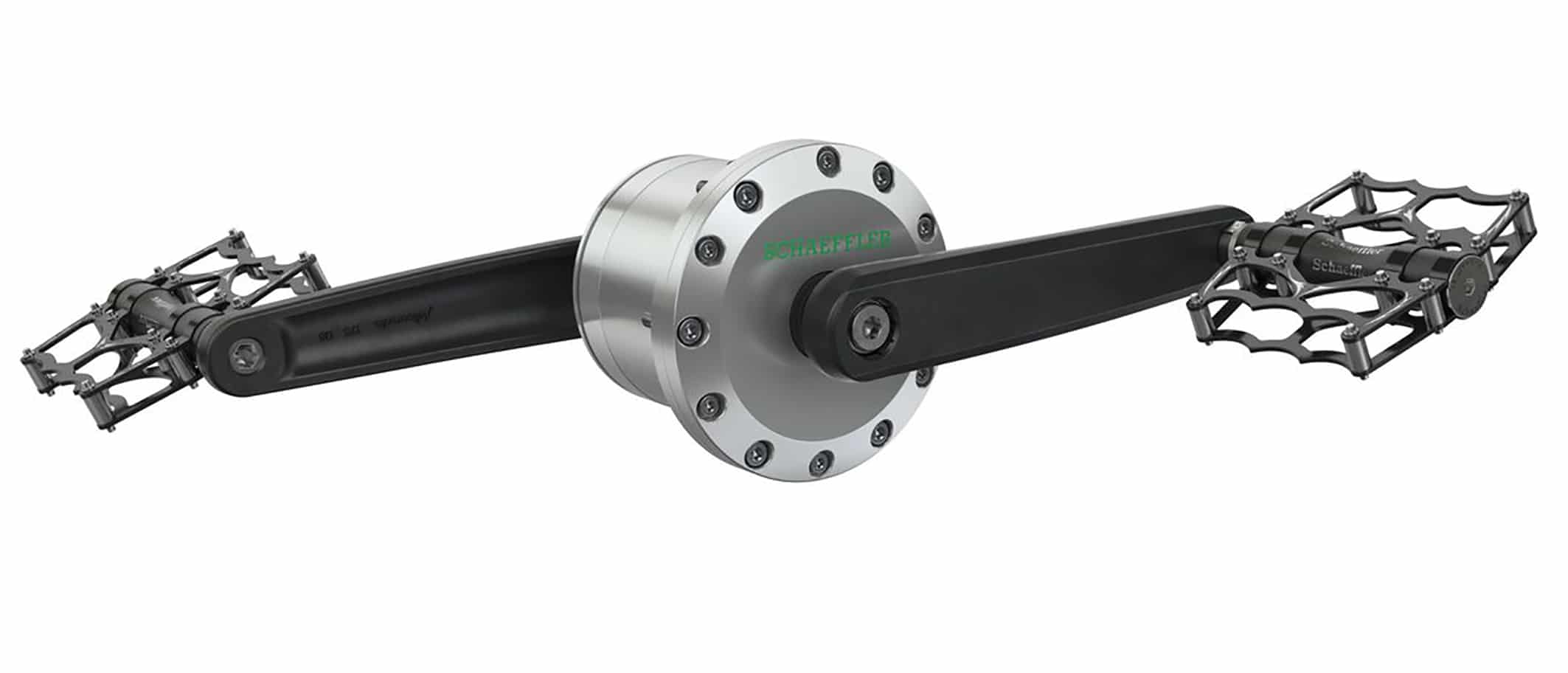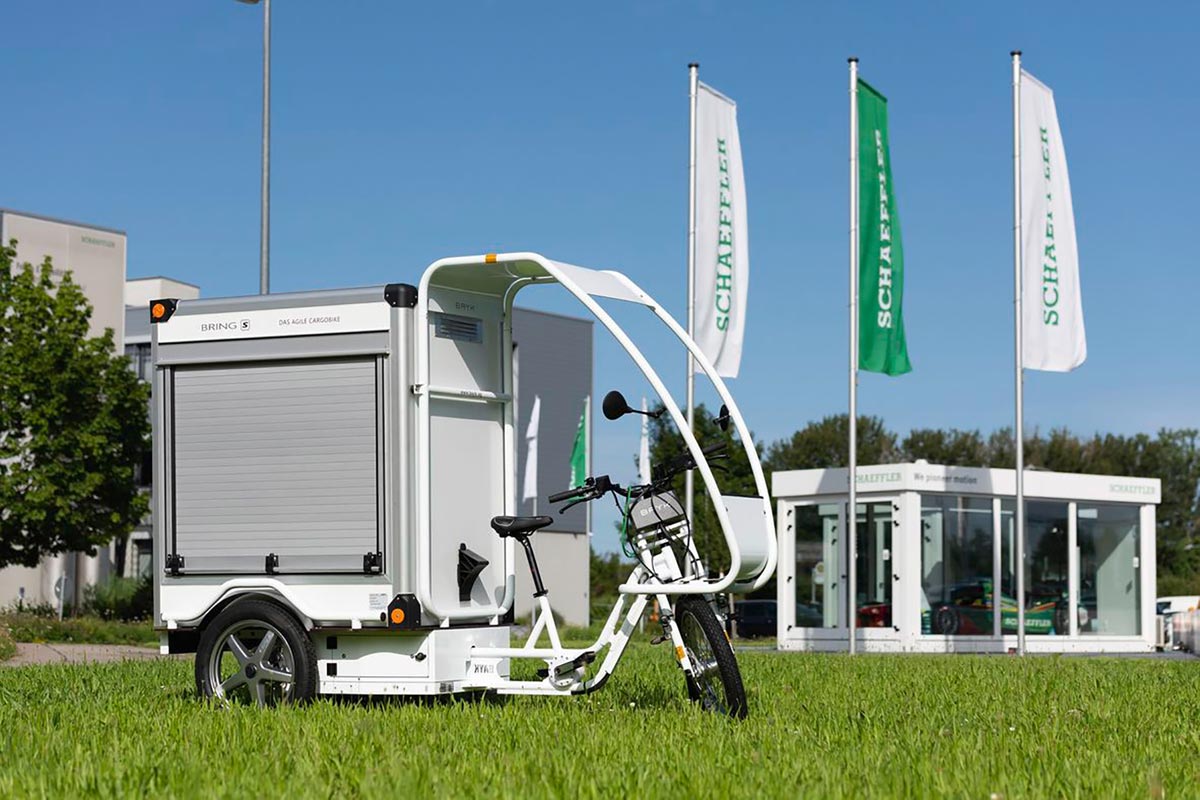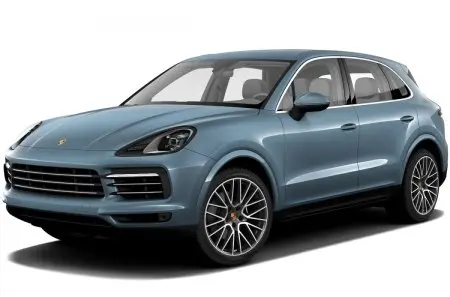
Electric bike: Schaeffler unveils revolutionary drive system
Content

Whether it's electric bicycles or three- and four-wheel derivatives, the Free Drive system that equipment manufacturer Schaeffler just unveiled at Eurobike 3 is a real little revolution.
Constant level of effort
Composed mainly of an electric motor, sensors, battery and its BMS control system, conventional chain or belt drive systems for VAE can reduce the stress on the pedals. The dish goes by itself. However, when it goes up, you have to put more stress on your legs.
This scenario may well fade away with the Free Drive solution developed by two German equipment manufacturers Schaeffler and Heinzmann. It features stable resistance to pedaling.
How it works ?
With Bike-by-Wire technology, which can be translated here by extrapolating ” Electric rope bike ”, The chain or belt will disappear. In the lower bracket, the generator will generate electricity to directly power the engine, which is normally mounted on the hub of one of the wheels.
The surplus will be used to recharge the battery. Conversely, if the flow is insufficient to cover the real-time energy demand, the difference will be provided by the block. In short, here we have a consistent hybrid power architecture. Muscle power is not directly transmitted to one or more wheels. The movement of the car is achieved only directly by electricity.
All system components communicate with each other via a CAN connection. Just like in a car, whether it's electric or not.

Possible options
Based on these elements, several modes of operation can be considered and possibly offered on one machine.
In the first case, the cyclist is the only master of the pedaling resistance he wants to provide. In this way, it remains linear, regardless of the battery level, as well as the ease of travel. Theoretically, this is the same as downhill, and with a headwind or reverse wind. But after a while, after a long rise, the engine will stall. Just like in a normal electric bike when the battery is low.
Another mode will allow the system to calculate the required regeneration level in real time so as not to exhaust energy. Thus, the force that must be applied while pedaling can be changed step by step. With real consistency for each one.
System benefits
In addition to the constant effort, unless you manually change the setting or go to another level, the Free Drive system offers several benefits that can make life easier for electric cyclists.
In most cases, you no longer need to charge the battery from the mains. To do this, it will be sufficient to configure the applied force in such a way that there is always a sufficient level of energy in the battery. On daily trips, the estimate will be easier, but you will still need to take into account the excess electricity consumed due to cold or wind.
Please note that in very adverse weather conditions, the need to continue much more intense physical activity can deter you from the classic electric bike. In this particular case, the force applied to a model equipped with Bike-by-Wire technology will be less important.
An end to the autonomy problem?
Another advantage of the solution jointly developed by Schaeffler and Heinzmann: the possibility of using a battery with a lower power consumption. Why continue to carry a backpack that allows you to travel hundreds of kilometers when the muscle effort to replenish the batteries will in most cases be sufficient to propel the car forward?
The hundreds of euros saved by installing a smaller lithium-ion battery will cover all or part of the additional costs required to use Bike-by-Wire technology. The package can fit even better into the frame, leaving designers more creative freedom. And above all, the stress of autonomy would almost disappear.
Compliant with VAE legislation?
European Directive 2002/24/CE of March 18, 2002, enforced in France, defines an electric bicycle as follows:” A pedal-assisted cycle equipped with an electric auxiliary motor with a maximum continuous rated power of 0,25 kW, the power of which is gradually reduced and finally interrupted when the vehicle reaches a speed of 25 km / h, or earlier if the cyclist stops pedaling. .
Is it compatible with the Free Drive solution from Schaeffler and Heinzmann? Setting the system up to match the power-limiting values to 250W and disabling the assist at 25km/h is no problem. But the electric motor cannot be considered as ” auxiliary "Because he always trained the bike, not muscle strength directly. Because of its role, its diet also cannot be cut gradually.
If European legislation is not adapted, the Free Drive kit can be installed on electric bicycles, which would be considered mopeds but not VAE.
A solution especially suited for cargo bikes
Schaeffler now wants to specialize in micromobility. The market is currently booming. If there is one set of small vehicles in which Bike-by-Wire technology really makes sense, it is cargo bikes and derivative tricycles and quads.
Why ? Because the total weight, including sometimes heavy loads carried, is potentially much higher. Thanks to the Free Drive system, users of these machines can find their role less painful.
In addition, in the BAYK catalog, the equipment manufacturer will present its Free Drive solution installed on the Bring S three-wheeled delivery model.

